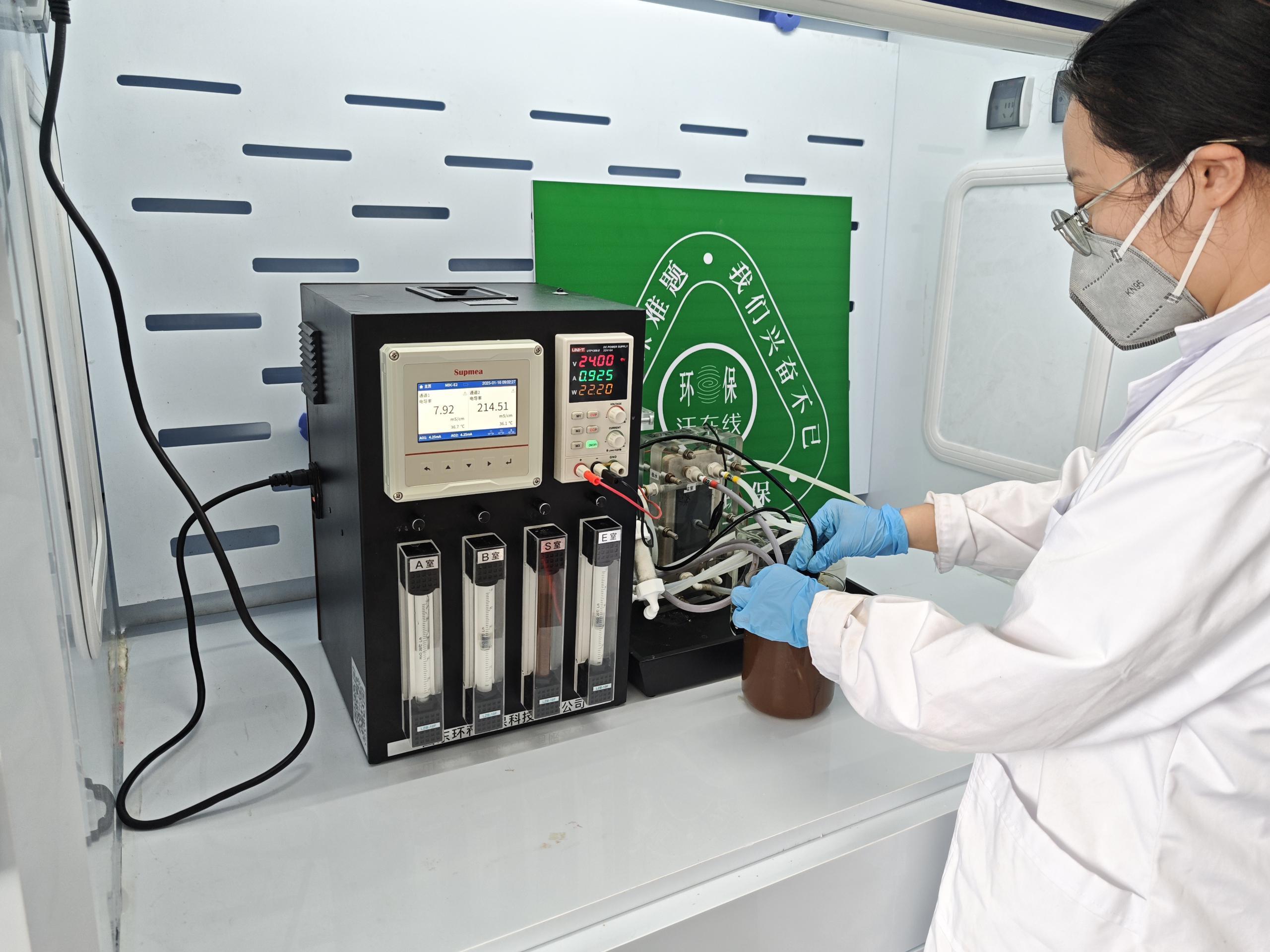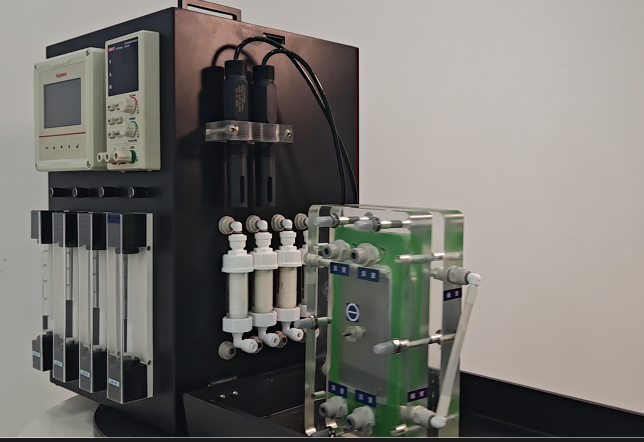07
2025
-
11
Electrodialysis technology: Salt concentration in wastewater from glufosinate-ammonium production
Author:
Glufosinate-ammonium is a broad-spectrum non-selective herbicide widely used worldwide. The wastewater generated during its production process is characterized by high salt content and complex composition, which has become a core problem hindering the green development of the industry. Traditional treatment processes such as evaporation crystallization and chemical precipitation generally have disadvantages such as high energy consumption and a relatively large risk of secondary pollution. Electrodialysis technology, with its outstanding advantages of efficient separation and resource recycling, provides an innovative path for the treatment of glufosinate-ammonium wastewater. This article will comprehensively explore the application value of electrodialysis technology in the salt concentration of glufosinate-ammonium wastewater from three dimensions: technical principles, process advantages, and development directions.
I. Technical Principle: Precise separation is achieved through directional ion migration
The core logic of electrodialysis technology is to take advantage of the selective permeability of ion-exchange membranes and, under the influence of an external direct current electric field, promote the directional migration of ions in the solution. The device is composed of multiple groups of alternately arranged anion exchange membranes and cation exchange membranes, forming a structure where the concentration chamber and the desalination chamber are alternately distributed. The wastewater from glufosinate-ammonium production mainly contains chloride ions (Cl⁻), sodium ions (Na⁺), and a small amount of heavy metal ions. Under the action of an electric field, cations (such as Na⁺) will pass through the cation exchange membrane and move towards the negative electrode, being blocked by the adjacent anion exchange membrane and then enriched in the concentration chamber. Anions (such as Cl⁻) pass through the anion exchange membrane and move towards the positive electrode. They are also blocked by the cation exchange membrane and then enter the concentration chamber. The uncharged glufosinate-ammonium molecules cannot pass through the ion-exchange membrane and are eventually effectively separated from the salt in the desalination chamber. In terms of membrane material selection, homogeneous ion-exchange membranes have become the preferred choice for the treatment of glufosinate-ammonium wastewater due to their high selective permeability, low resistance and chemical corrosion resistance. Compared with heterogeneous membranes, the ion migration flux of homogeneous membranes can be increased by more than 30%, and at the same time, it can effectively prevent the leakage of glufosinate-ammonium molecules, ensuring stable separation efficiency.


Ii. Process Advantages: High efficiency, energy conservation and resource utilization are advanced in a coordinated manner
1. The desalination and concentration efficiency is outstanding
Electrodialysis technology can concentrate the salt content in glufosinate-ammonium wastewater to over 20%, and the salt concentration in the effluent from the desalination chamber can be reduced to below 0.5%. Through the series design of multi-stage membrane stacks, the gradient concentration of salt can be achieved. The final concentrated liquid can be directly fed into the evaporation system to prepare industrial salt, while the desalinated liquid can be reused in the production process, thus building a closed-loop treatment system of "separation - concentration - reuse".
2. The effect of energy conservation and consumption reduction is remarkable
Compared with the traditional evaporation crystallization method, the energy consumption of electrodialysis technology can be reduced by 40% to 60%. Its operating temperature range is controlled between 5 and 40℃, avoiding the scaling problem and material decomposition risk caused by high-temperature evaporation. In addition, by adopting the pulse reversal technology (EDR), the electrode polarity is switched every 15 to 20 minutes, which can automatically clean the dirt on the membrane surface, reduce the frequency of chemical cleaning, and further lower the operation and maintenance costs.
3. The value of resource recycling and utilization is high
The high-salt wastewater concentrated by electrodialysis can extract by-products such as sodium chloride and sodium sulfate, achieving the recycling and utilization of salt resources. For instance, relevant studies have shown that through bipolar membrane electrodialysis technology, the salts in glufosinate-ammonium wastewater can be converted into equal moles of acid (HCl) and base (NaOH), which can be directly supplied to the production process for recycling, reducing the purchase volume of chemical reagents.
4. Effective control of environmental risks
In traditional treatment processes, if glufosinate-ammonium wastewater is directly discharged, it is prone to cause eutrophication of water bodies and soil pollution. Electrodialysis technology achieves salt removal through physical separation without the need to add chemical agents, and can reduce the volume of concentrated liquid by more than 80%, significantly lowering the load on subsequent treatment and the risk of secondary pollution.
Iii. Future Outlook: Facilitating the Green Manufacturing Transformation of the Industry
With the continuous improvement of global environmental protection requirements, the application of electrodialysis technology in the glufosinate-ammonium industry will become more widespread. Its future development directions mainly include three aspects: First, innovation in membrane materials, developing new types of ion-exchange membranes with high selectivity and low energy consumption (such as bipolar membranes and proton conduction membranes), further enhancing separation efficiency and anti-pollution performance; The second is the intelligent upgrade of the process, integrating big data and machine learning technologies to achieve adaptive operation and fault early warning of the electrodialysis system, reducing the need for manual intervention. Third, the application fields have been expanded. Besides the wastewater from glufosinate-ammonium, the technology has been extended to the treatment of wastewater from other pesticide intermediates and pharmaceutical raw materials, promoting the green transformation of the entire chemical industry. Electrodialysis technology provides an efficient and environmentally friendly solution for the concentration of salt in the wastewater from glufosinate-ammonium production. Through membrane material innovation, process integration optimization and intelligent upgrading, this technology is expected to become the core driving force for the glufosinate-ammonium industry to achieve the "zero emission" goal, injecting new impetus into the sustainable development of global agriculture.
Related Products
Electrodialysis technology: Salt concentration in wastewater from glufosinate-ammonium production
2025-11-07
Portable flexible cabin: The "Light Cavalry" for water treatment in Emergency and Remote scenarios
2025-10-31
"Junqi Fang" : An efficient upgrade solution for wastewater biochemical treatment driven by sponge biological fillers
2025-10-29
The Application of Bipolar Membrane Electrodialysis in the Resource Utilization of Lysine Hydrochloride
2025-10-17
Huanke Environmental Protection Technology
HOTLINE:
Address:Optoelectronic Industry Accelerator in Weifang Hi-Tech Zone, Shandong Province, China
Contact:Zhang Gong
WhatsApp:+8619953608211
Email:eco.eqpt@gmail.com


Consult

TikTok
Copyright © 2023 Shandong Huanke Environmental Protection Technology Co., Ltd
